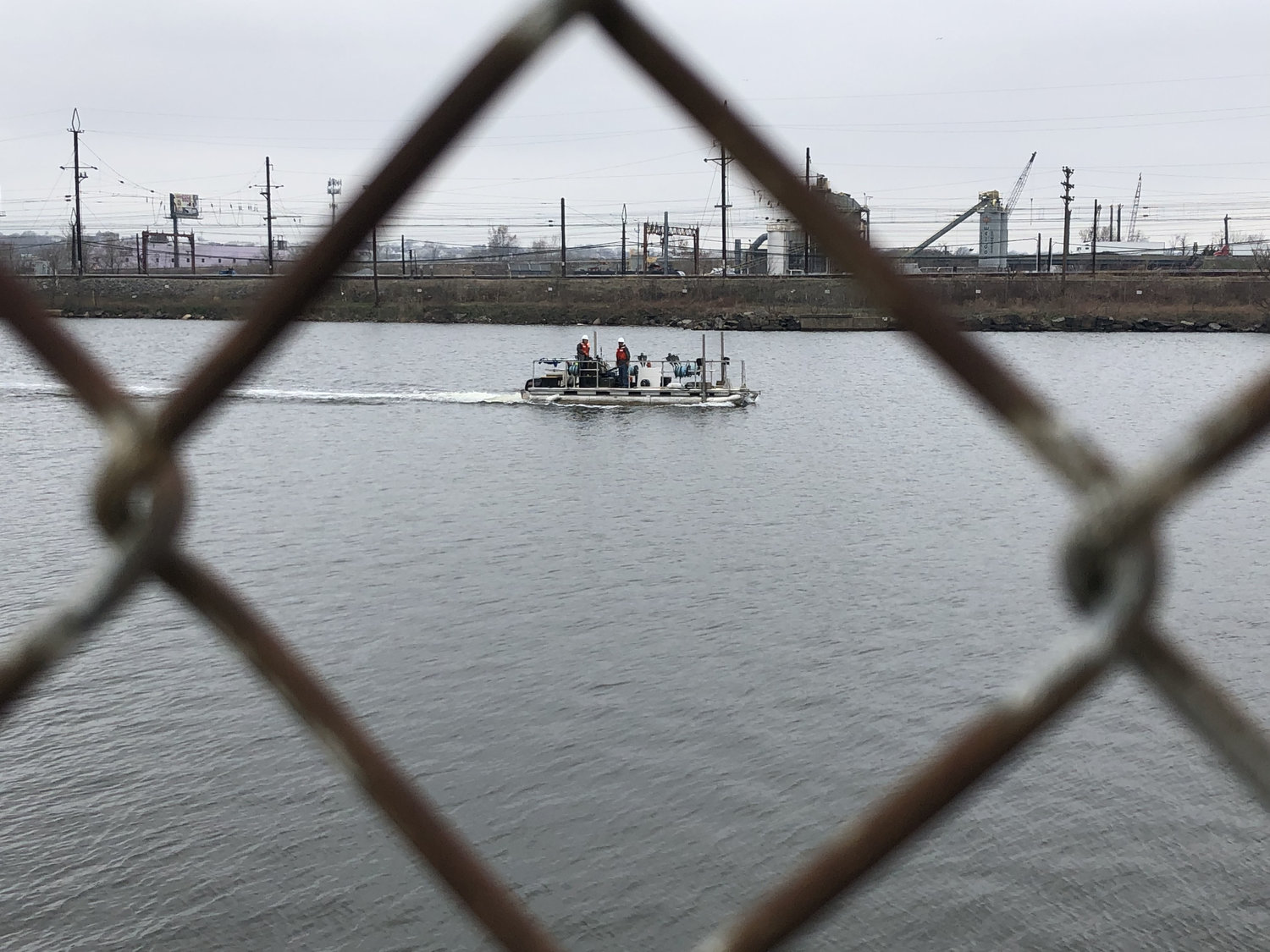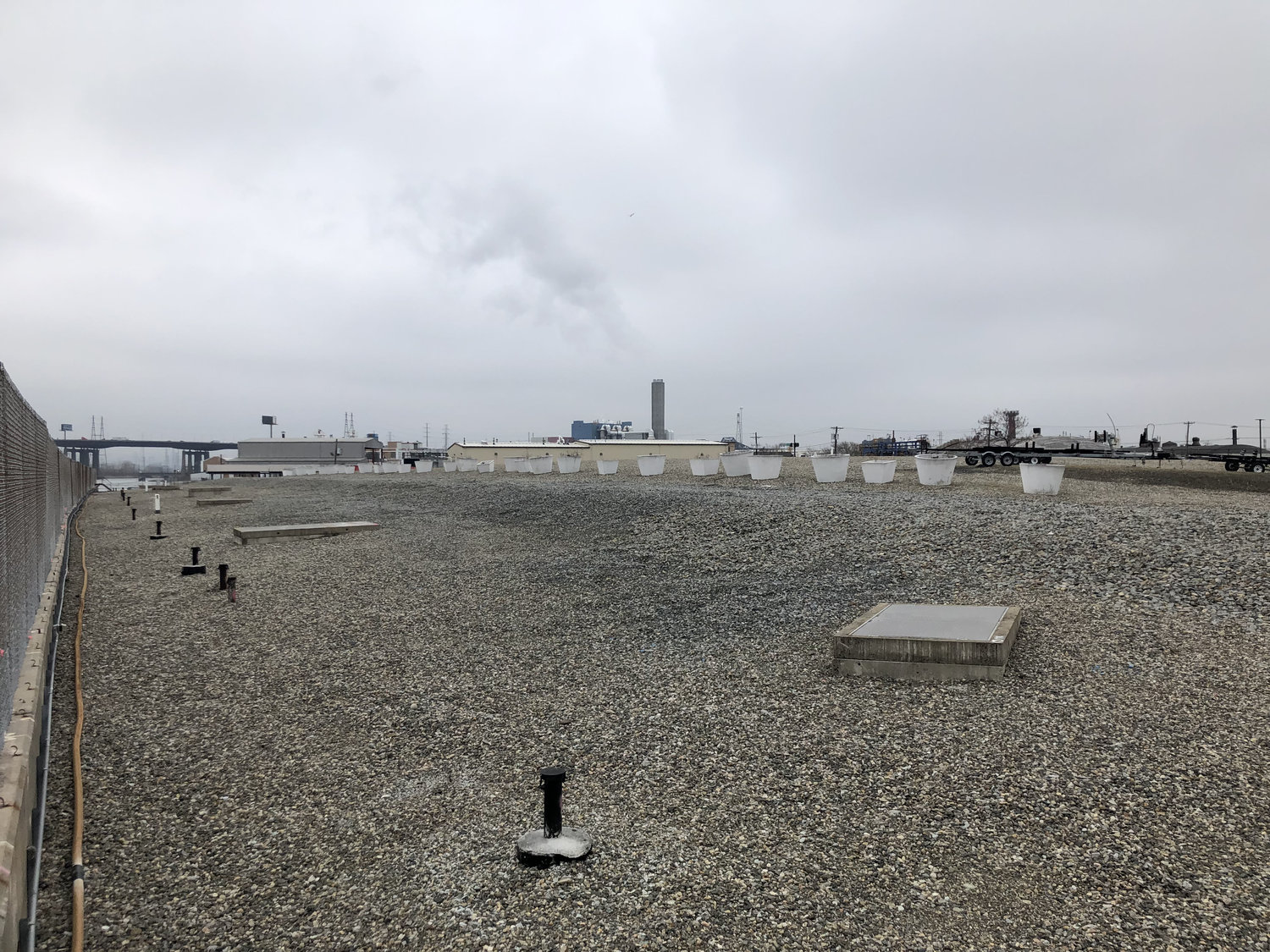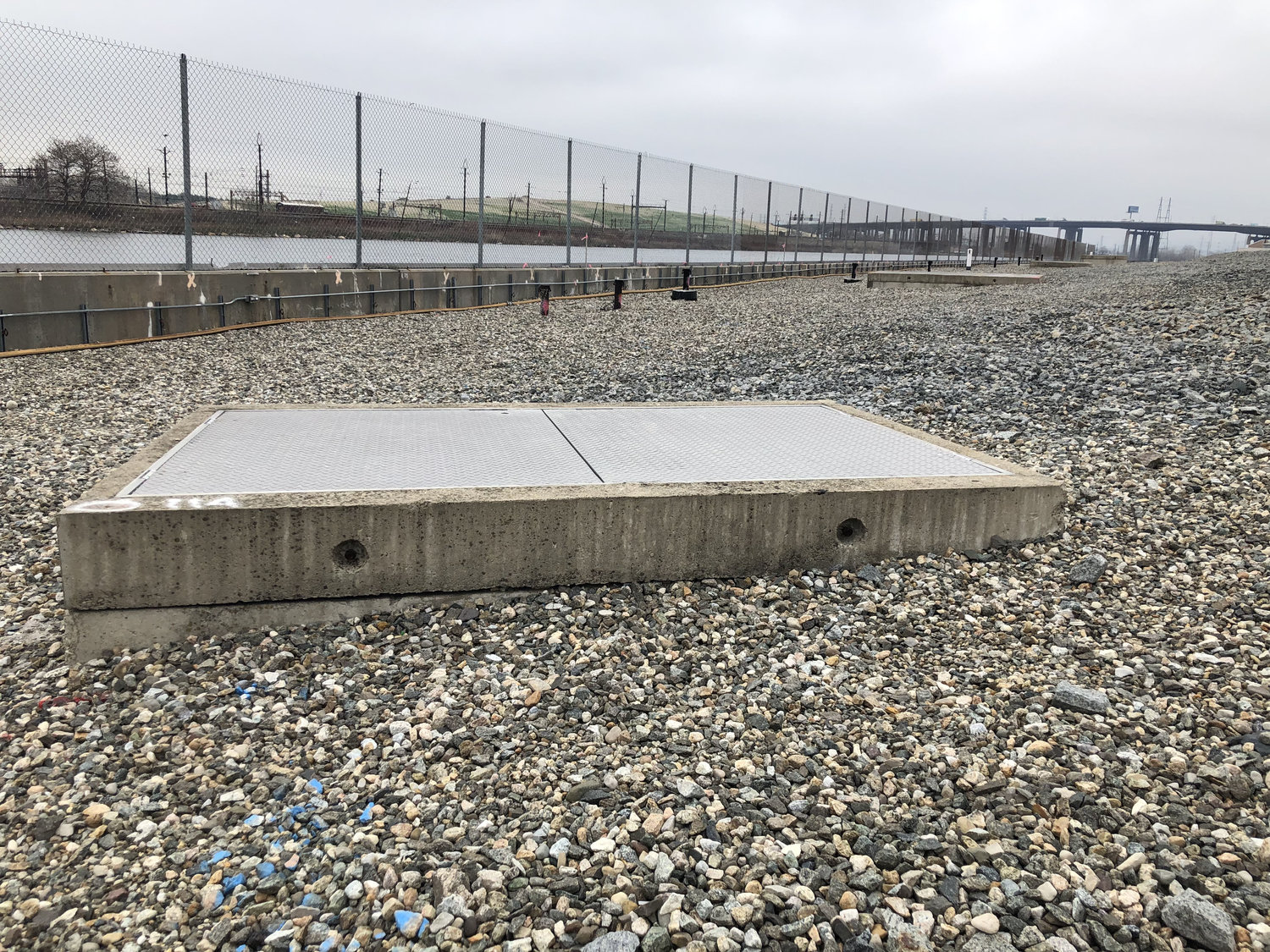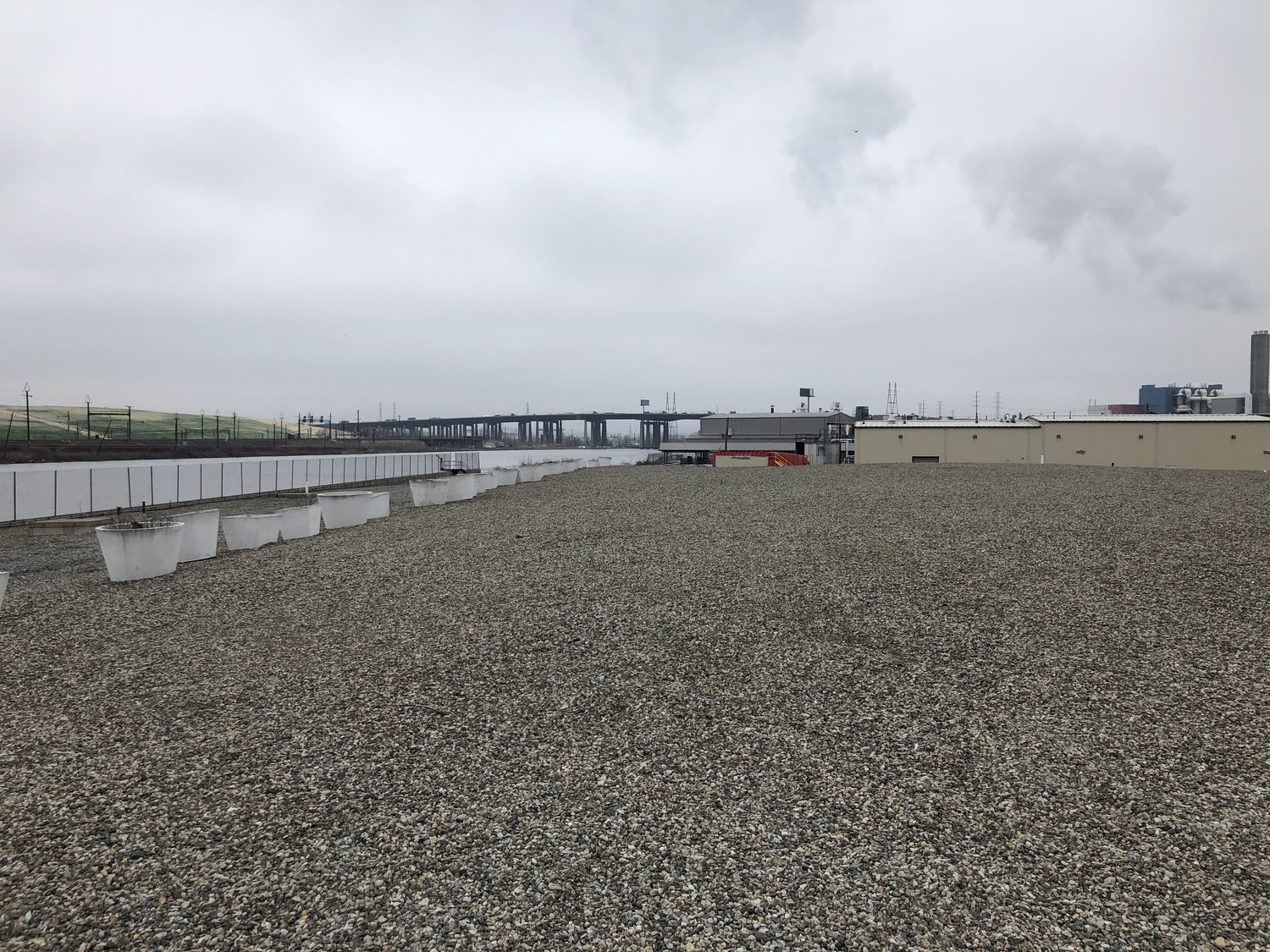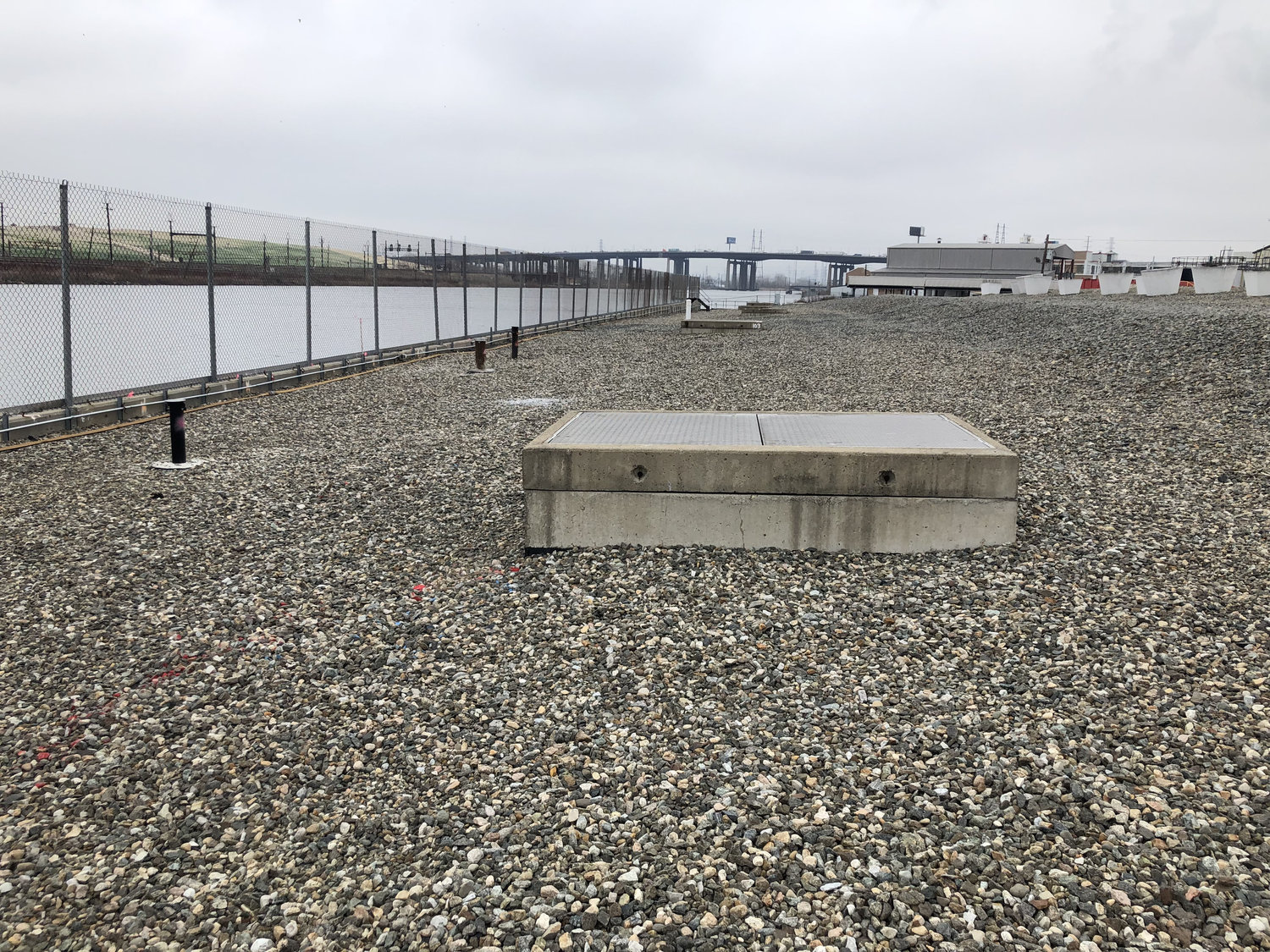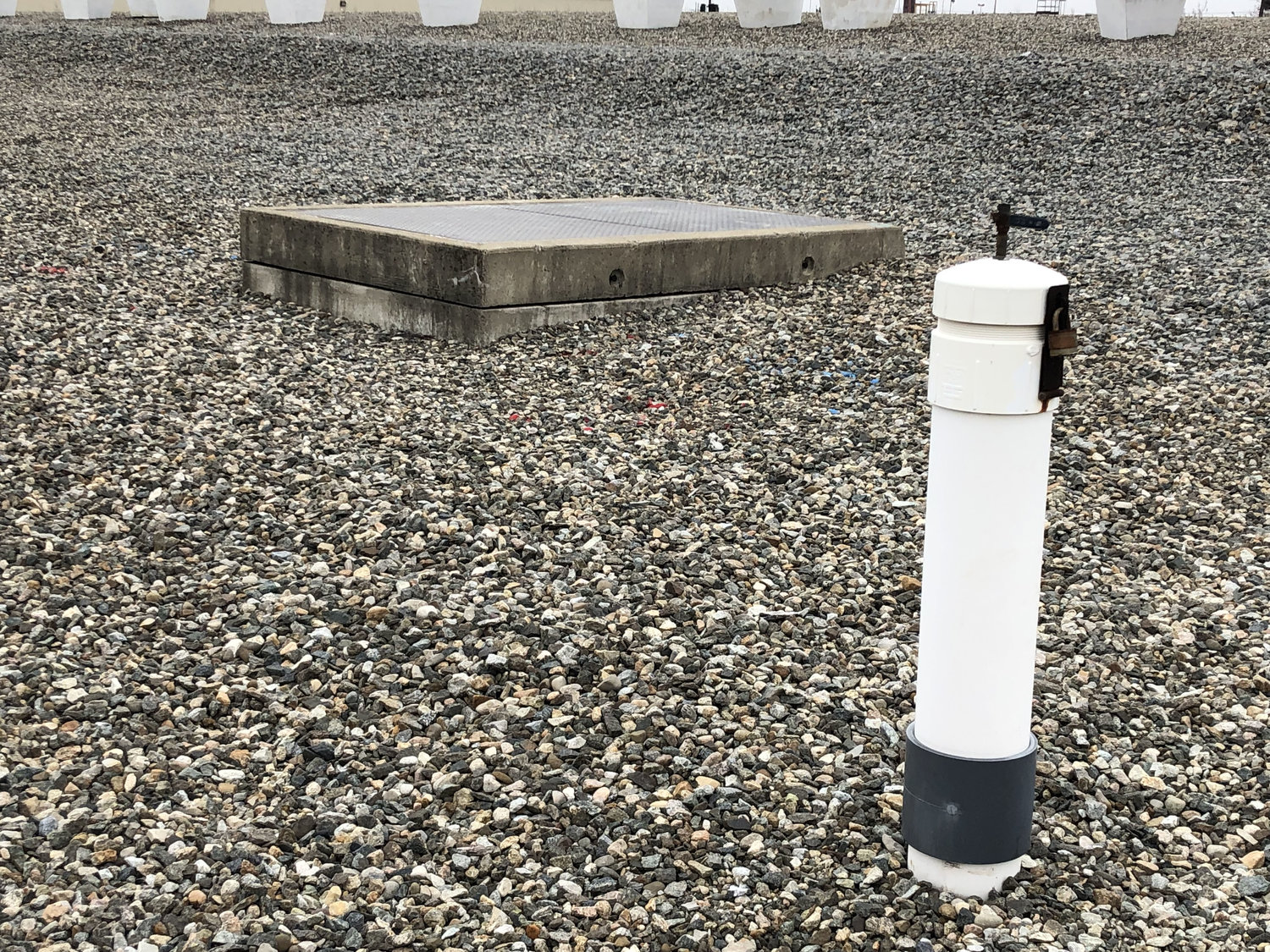One morning the people woke up and they saw the people in what they call the moon suits.
Joe Nardone
Newark, New Jersey has been a target for big business and chemical production from as early as the cities origins. The Diamond Alkali site is located right in the heart of Ironbound where it consumed 5.6 acres which stretched from 80 Lister Avenue to 120 Lister Avenue. The plant has been used in developing different chemicals for numerous industrial companies for over one hundred years. This site was just one of many in the Ironbound section of Newark that were unknowingly at the time manufacturing a hazardous atmosphere for the community. What makes Diamond Alkali a more dangerous threat that has whit-stood the test of time was not only the hazardous waste it was creating, but the fact that it had a sewage system that led directly into the Passaic river. To the North of the site is the river and on the east, south, west there is nothing but heavy industry. Dioxin is serious, it can attach itself to dirt and dust particles and moves around the same way that dust does. It can be blown by the wind, or spread by trucks that would move on to the property by dogs walking through the area, children playing in the area, and through the sewer system.
Between the years of 1951-1969, Diamond Alkali had operated a chemical plant which was processing herbicides, and one that was infamously used for the Vietnam war. This herbicide known as agent orange was a toxin that ate through vegetation covering trees and portions of land. Agent Orange is a terrifying toxin in its own right, but the byproduct of this creation was an invisible nightmare that would plague the Newark region. Dioxin, is a cancer causing agent that can be linked to several other health issues. High levels of dioxin had been produced as a result of the herbicide production process. In 1983, the discovery of Dioxin in Ironbound severely complicated the lives of residents in the neighborhood. In other locations in Ironbound, residents had learned that they could not leave it up to Federal, State, or city officials to protect their health or to clean up the toxic chemicals. The outbreak of Dioxin had been discovered through soil sampling in the near by towns surrounding the Diamond Alkali site. Dioxin was even found in high concentrations along Joseph St. which means that some of it moved from the contaminated plant site. DEP officials stated that they had no intention of removing the dioxin. They’d rather “contain” it, as if that is a better solution. They said that they would put concrete over the site. But, there’s also worry that this could cause dust problems during the construction, causing the dioxin to spread. The government also claims, that there is no facility that is able to take the soil contaminated by the dioxin and destroy it.
You can read a lot about chemicals and their effects, but when someone is standing in front of you…
Nancy Zak
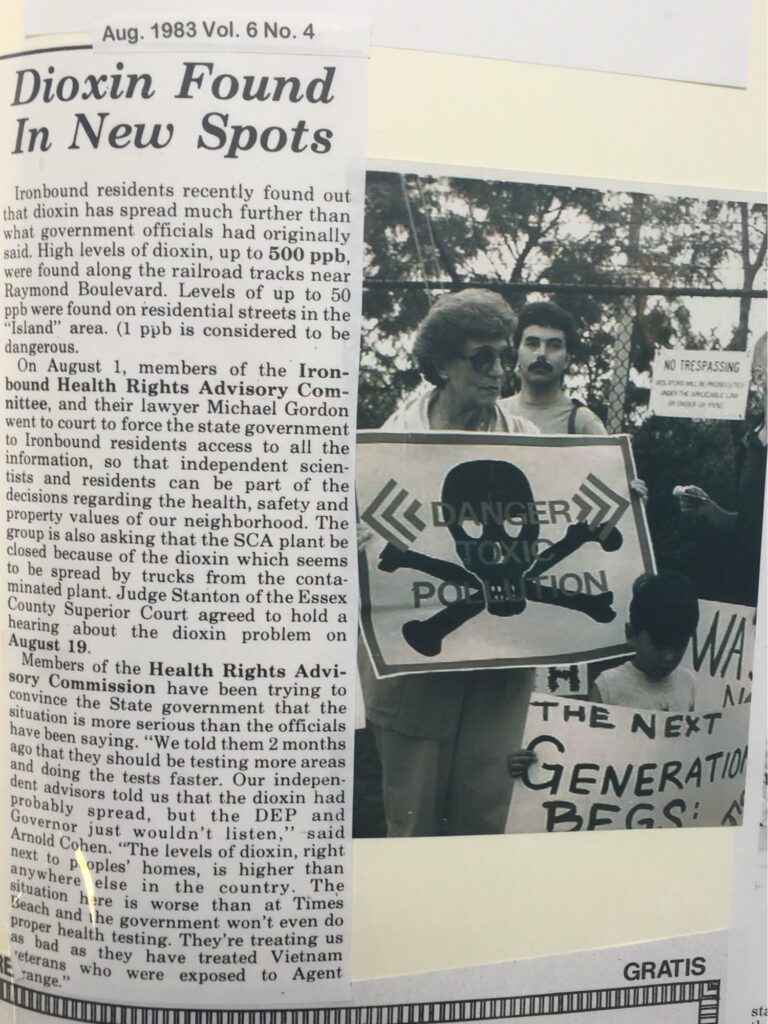
Dioxin seemed to emerge everywhere. On June 2, 1983, the state government announced that huge amounts of Dioxin had been found in the Ironbound on Lister Ave. The Ironbound Health Advisory Commission was formed by the residents, who felt they had to take matters into their own hands. Of this commission, 15 members were doctors and scientists who agreed to join and help the residents. Then, six experienced lawyers with cases involving damages from toxic pollution agreed to join the commission. And, about 40 community residents black, white, Hispanic, and Portuguese had volunteered to be on the commission as well. Luckily, more people began to join, even Lois Gibbs, who was President of the Love Canal Homeowners Association along with Dr. Barry Commoner, who is a nationally known environmental scientist.
Since the discovery, hundreds of community residents attended meetings about the dioxin problem. They made demands for health testing, more testing for toxic chemicals in the whole area, community involvement in the decisions about this situation, and other measures were developed by the residents of FDR Homes and supported by the IronBound committee Against Toxic Waste and many other people in the community. With the Health Advisory Commission, residents will not have to rely on state and local officials, but will have independent experts to help to push for the demands, and protect the health and legal rights.
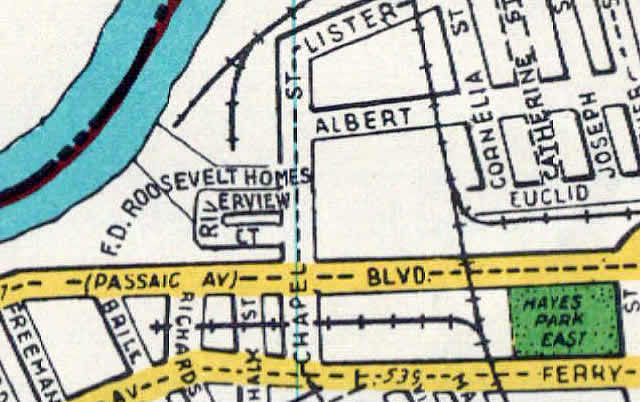
Homeowners were skeptical, because they believed this was a ploy for business to expand and get rid of their houses.Shockingly, tests for dioxin which the state had done, had been limited and some tests did not come out well. Out of 25 homes where tests were done, the laboratories doing the testing were incapable (or unwilling) of reporting results for 14 of the homes. Only 11 homes were actually tested. No tests for dioxin were done at FDR homes. Instead, a questionnaire was distributed to some people, excluding the residents of FDR. Some refused to fill out the questionnaire because some of the questions seemed to be an unnecessary invasion of privacy. People feared that the government would use the results to take away their homes. No one trusted the government officials involved in the situation.
As time passed, several lies had surfaced on the part of the government. They had said that testing would have to wait because the necessary procedures were not yet available for the public. The truth was the testing had been around for over 10 years. It is obvious that the state and federal government officials have tried to downplay the severity of the dioxin contamination and there is a reason for it. The resulting human exposure and diseases, and the government’s liability puts them in an expensive situation that amounts to millions of dollars. In relation to this, state and federal officials acted the same way when the Love Canal contamination was first discovered. It took years for residents to get a response and just compensation from the governments involved.The problem was the years of delay before the Government took any action after they knew about the problem of dioxin at the site. Thanks to Dr. Barry Commoner for reporting on T.V that the first EPA report talked about dioxin contamination which was published in 1974, 9 years before the Government took any action. Scientific research indicating that the workers in the plant were being poisoned was done in 1962 and published in 1964.
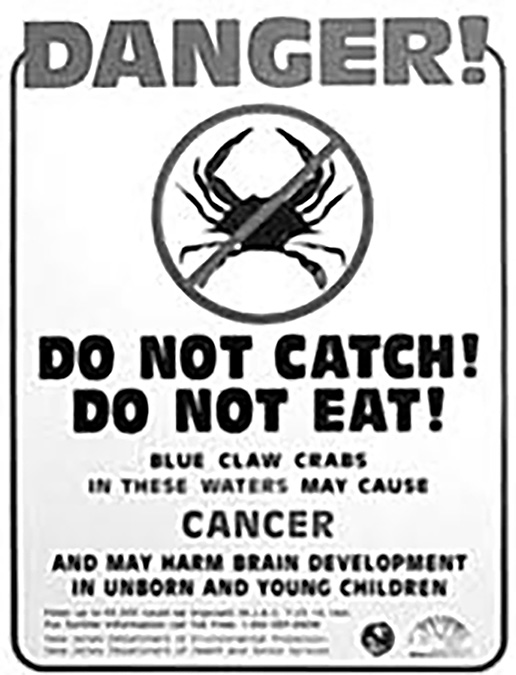
The site was added to the National Priorities List (NPL, a.k.a. Superfund) in September 1984, and is currently fenced and has an electronic, automated security system. Contaminated soils and debris are contained within the fenced area under an impermeable cap. Current use of the site includes ongoing operations and maintenance activities associated with the interim remedy. There is a deed notice for the site protecting the interim remedy
The EPA had joined forces with federal and state agencies to begin clean up in 2001, and had come up with the best remedy at the time which was to seal off the the area from 80-120 Lister ave. This was done by burying all Dioxin contaminants underground and entombing the site in cement. The main goal, although not the best, was to stop the spread of dioxin and keeping it out the Passaic river.
The Passaic River having been a dumping ground for most of these toxins is now the main focus for the EPA to try and get cleaned up. Cleanup activities in 2012 and 2014 included removal and disposal of contaminated sediment from two areas of the river.The EPA has been developing a working plan for the past current years to see what would be the most effective way to clean the 17 mile stretch of the river. The plan involves removing 4-6 million cubic yards of sediment. Those removed pieces will then be topped off with a cap, covering the remaining soil.
It’s a really large site. Its a really complicated site, which is estimated to cost 1.4 billion dollars!
Elizabeth Butler
The Ironbound section of Newark has been a victim to the environmental injustices of big business and politics for too long. It may be a distant future, if ever before the land and the river around it are toxin free, or safe enough to inhabit again. What we do have is a start to making others aware, and this one injustice has brought to light how the power of community is what can really bring the voice of the people to the ears of the powers that be.
Resources
Shereen Kandil
Community Involvement Coordinator
Nancy Zak
IronBound Community Corporation
Community Outreach Director
317 Elm Street | Newark, NJ 07105
Elizabeth Butler
Remedial Project Manager
290 Broadway Manhattan, New York
“ToxicSites.” ToxicSites, www.toxicsites.us/site.php?epa_id=NJD980528996.
“Case Summary: $165 Million Settlement to Start Cleanup Work on the Passaic River in New Jersey.” EPA, Environmental Protection Agency, 2 Dec. 2016, www.epa.gov/enforcement/case-summary-165-million-settlement-start-cleanup-work-passaic-river-new-jersey.
“Case Summary: $165 Million Settlement to Start Cleanup Work on the Passaic River in New Jersey.” EPA, Environmental Protection Agency, 2 Dec. 2016, www.epa.gov/enforcement/case-summary-165-million-settlement-start-cleanup-work-passaic-river-new-jersey.
Franklin Delano Roosevelt Homes, https://oldnewark.com/publichousing/roosevelthomes.php
